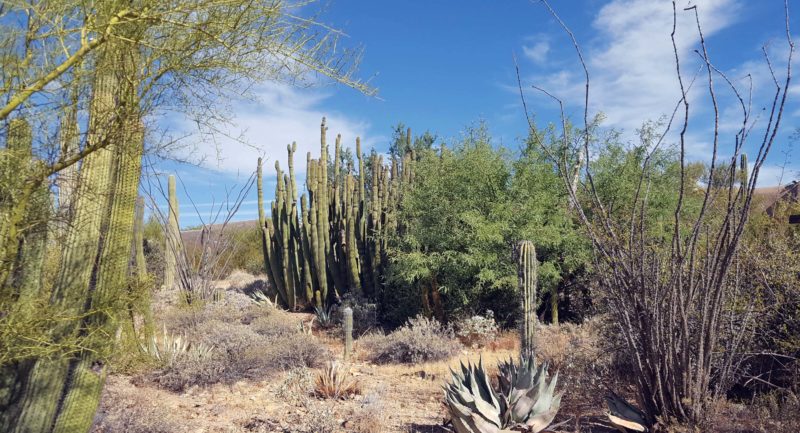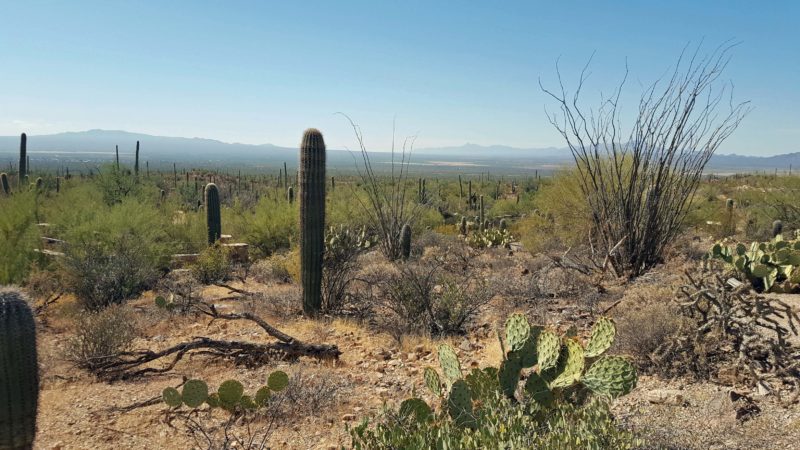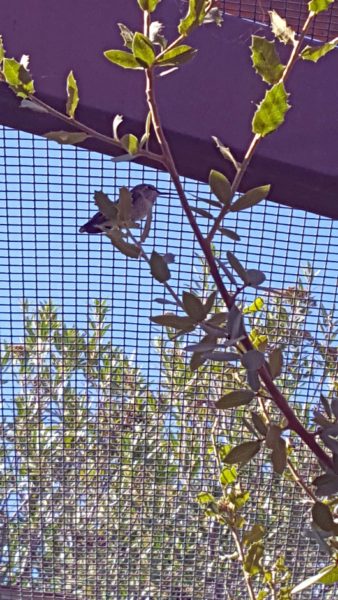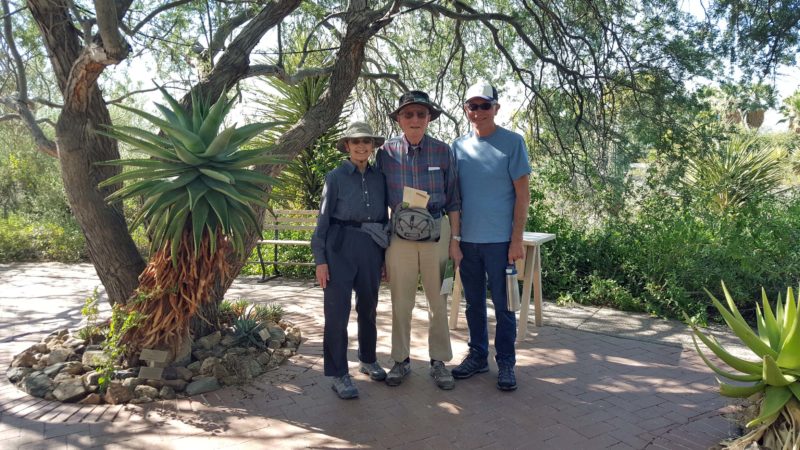This morning, Dan and Vernie took Ted and me to the Arizona-Sonora Desert Museum–a definite “must see.” It’s an outdoor museum with paths that took us through true desert.

A variety of cacti are visible in this photo. The center plant is an organ pipe cactus; the lower center is an agave cactus (they make tequila from these roots); and just above the agave is the stalk of a young saguaro cactus. I don’t remember the names of the leafy one on the left or the bare-looking one on the right.

The short plants are cholla cacti, but Vernie said they are called “teddy bear cactus” because they look fluffy. (They’re not. They’re sharp!)

The cactus on the left is called a “jumping cholla” because if a branch dies, it will “jump” onto your clothing if you brush against it. It doesn’t really jump; it breaks off of the plant and sticks to your clothing. How do you get cactus out of your clothes? Vernie said you use a comb. In the center of the photo is a prickly pear cactus, and behind it is a saguaro that is probably over 100 years old, since they don’t sprout arms until they are about 75 years old.

Here are many young saguaro cacti (no arms), some prickly pear, a cholla on the right, and the mystery (to me) cactus that looks like a bush of sticks.
There is a hummingbird house on the museum grounds. I didn’t know until today that hummingbirds are found only in the Western Hemisphere, and in the U.S., only west of the Mississippi River. (The docent admitted that with climate change, there might be a few hummingbirds just east of the Mississippi.) Arizona has 18 kinds of hummingbirds; Missouri has one, maybe two kinds. There are about 300 species of hummingbirds.

The hummingbirds fly all over in the hummingbird house and are easy to spot, but getting a picture is harder. They move very quickly and they are hard to see when they alight on the dense foliage. I got a lucky shot of this one.
Finally, here’s a photo of the people with whom I had a wonderful desert museum experience.
